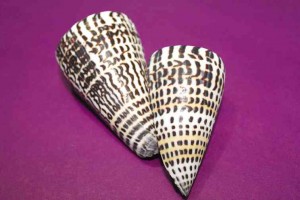Ode to lettered cones
Unlike whales, dugongs, turtles and fish, certain sea-dwelling animals have their bones on the outside.
These animals are called mollusks (meaning “soft-bodied”) and they belong to the largest marine phylum in the animal kingdom, Mollusca.
We do not usually consider bones to be beautiful, yet the skeletons of mollusks, what we call shells, are among the most heartbreakingly beautiful and precious of the many gifts of the sea to us, perfidious mortals who walk the land.
Mollusks are among the oldest existing animals on this planet and the shell you find on a beach is actually the skeleton of an animal whose kith and kin have continuously lived on earth for millions of years and whose ancestors coexisted with the dinosaurs at a time when God’s garden had not yet been defiled.
Each kind of mollusk has its own unique shell but for many shell collectors, the genus Conus is the most popular, owing to the wide variety of colors and patterns within its general conical base shape.
Article continues after this advertisementCones are carnivorous, predatory and venomous. They live in tropical and subtropical waters of the Pacific and Indian oceans, mainly in the intertidal area between reef and shore, hiding in crevices in rocks and corals. The sting with which they kill their prey—other mollusks and marine worms—can be fatal to humans; live ones should therefore be handled with extra care or avoided completely.
Article continues after this advertisementThe shell I have chosen to feature and introduce to the reader is the Conus litteratus, the lettered cone, a well-known species of this large family of mollusks. It is a smooth, white shell with an occasional banding of pale yellow and close-set bands of graphic black or dark brown spots. These dots and lines often merge or join up to form letters of our own modern alphabet, such as X, Y, W or M, or form markings that resemble or suggest Jewish, Indian or Thai scripts.
Whatever the language is, this shell, as it is with many of God’s creations in the natural world, speaks to us in a way only the receptive and responsive among us “get” and understand.
The slimy slug that glides across the moss in your garden, how different is it really from the slimy and sleazy among us human beings? Mollusks carry their shells all their lives. Do men not also carry their crosses everywhere they go? We are all connected by the thin thread of divine love, one that is strong as steel.
I wrote the following verse as a tribute to the Conus litteratus:
“Ode to the Lettered Cone”
It is God
wanting to speak to us
in beautiful calligraphy!
(The author is the academic supervisor at Marian School of Quezon City and curator of the school’s Museum of Rocks and Shells. E-mail the author at [email protected].)
